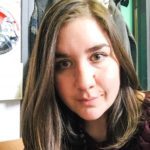Link to Pubmed [PMID] – 33668764
Link to DOI – 47510.3390/microorganisms9030475
Microorganisms 2021 Feb; 9(3):
The type III secretion systems (T3SS) encoded in pathogenicity islands SPI-1 and SPI-2 are key virulence factors of Salmonella. These systems translocate proteins known as effectors into eukaryotic cells during infection. To characterize the functionality of T3SS effectors, gene fusions to the CyaA’ reporter of Bordetella pertussis are often used. CyaA’ is a calmodulin-dependent adenylate cyclase that is only active within eukaryotic cells. Thus, the translocation of an effector fused to CyaA’ can be evaluated by measuring cAMP levels in infected cells. Here, we report the construction of plasmids pCyaA’-Kan and pCyaA’-Cam, which contain the ORF encoding CyaA’ adjacent to a cassette that confers resistance to kanamycin or chloramphenicol, respectively, flanked by Flp recombinase target (FRT) sites. A PCR product from pCyaA’-Kan or pCyaA’-Cam containing these genetic elements can be introduced into the bacterial chromosome to generate gene fusions by homologous recombination using the Red recombination system from bacteriophage λ. Subsequently, the resistance cassette can be removed by recombination between the FRT sites using the Flp recombinase. As a proof of concept, the plasmids pCyaA’-Kan and pCyaA’-Cam were used to generate unmarked chromosomal fusions of 10 T3SS effectors to CyaA’ in S. Typhimurium. Each fusion protein was detected by Western blot using an anti-CyaA’ monoclonal antibody when the corresponding mutant strain was grown under conditions that induce the expression of the native gene. In addition, T3SS-1-dependent secretion of fusion protein SipA-CyaA’ during in vitro growth was verified by Western blot analysis of culture supernatants. Finally, efficient translocation of SipA-CyaA’ into HeLa cells was evidenced by increased intracellular cAMP levels at different times of infection. Therefore, the plasmids pCyaA’-Kan and pCyaA’-Cam can be used to generate unmarked chromosomal cyaA’ translational fusion to study regulated expression, secretion and translocation of Salmonella T3SS effectors into eukaryotic cells.
